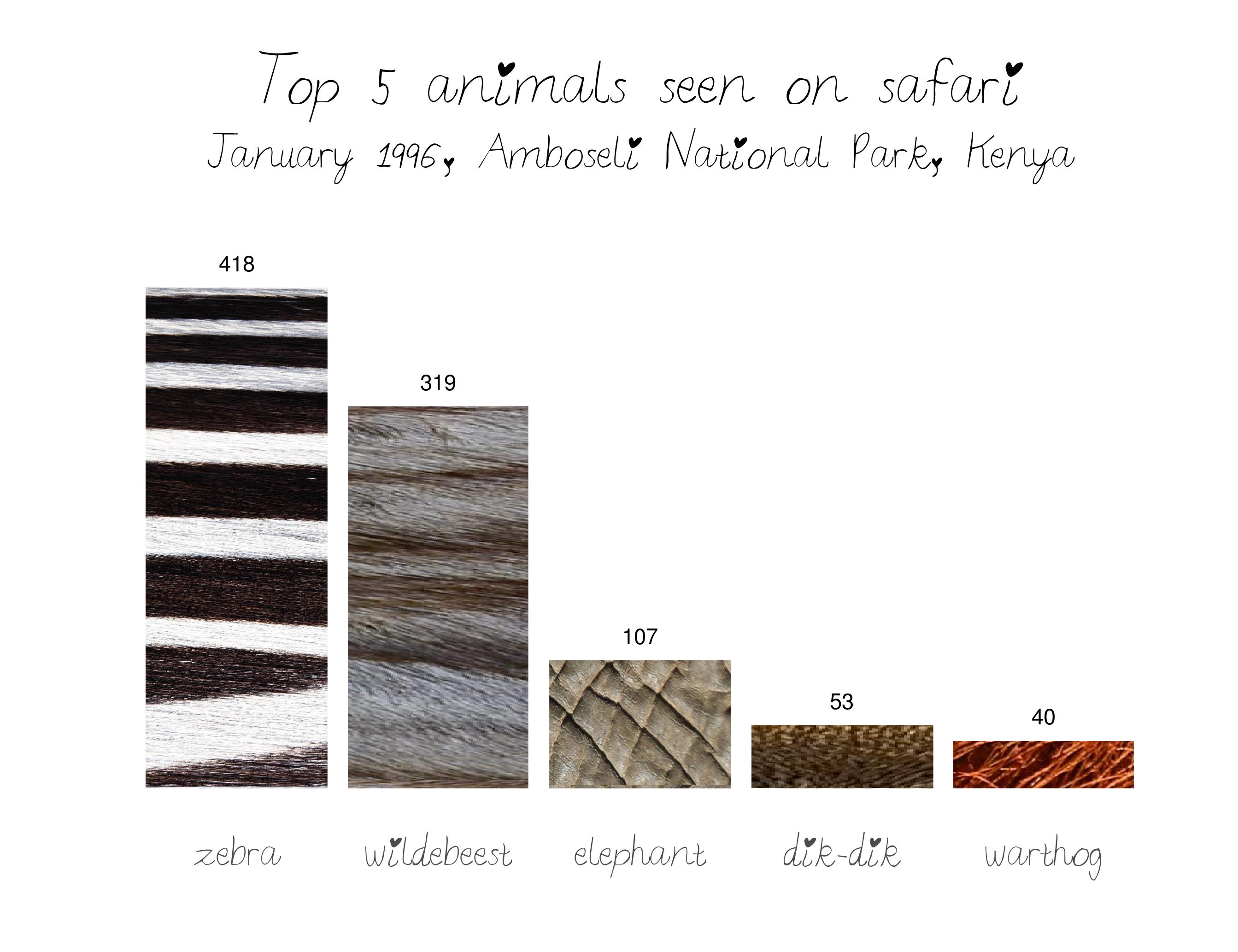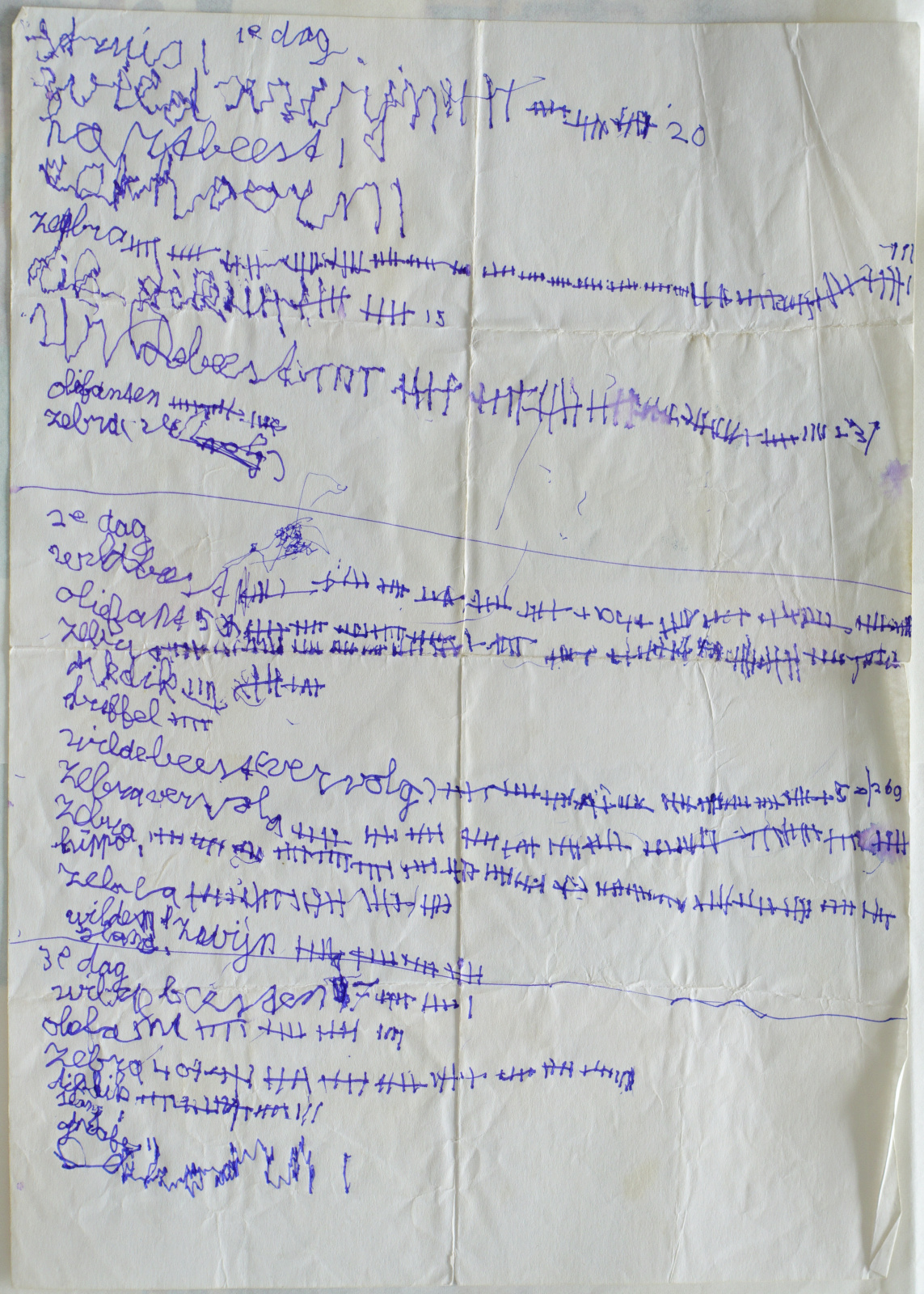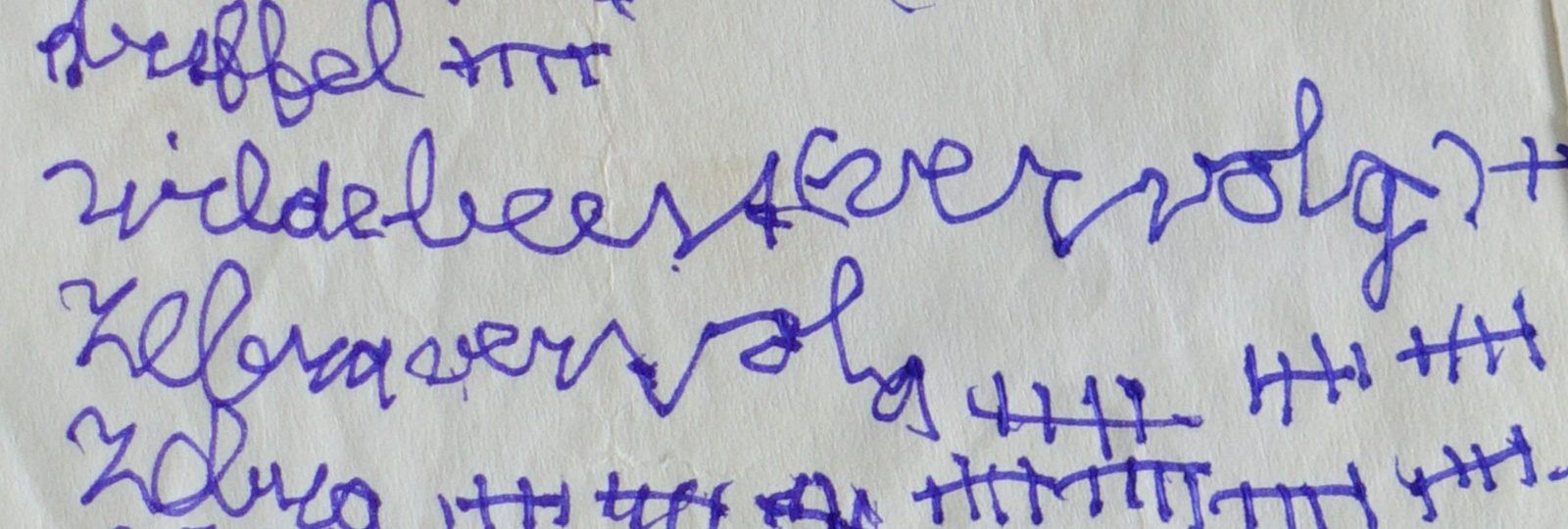
Way back, in January 1996, Bill Clinton was president of the United States. The movie Toy Story had just come out and we all danced the Macarena. For me, that year is also marked by a very important personal event: at the age of 8, I collected my first data set. It was a tally of the animals we spotted on a safari trip. Obviously, my first blog post could only be about my first data collection project!
I was a pretty typical eight-year-old girl who liked computers, dressing up, singing, and the Spice Girls. My family lived in Kenya at the time, and my siblings and I went to a Dutch primary school. When 1996 was still fresh and new, we went for a safari trip to the Amboseli National Park. Amboseli is one of the best places in the world to spot elephants in the wild. To paint a picture: grasslands stretch out to the horizon, with the occasional tree. The park is home to a great variety of large mammals and birds. A dusty, unpaved road cuts through the green. Snow-topped Mount Kilimanjaro, the tallest mountain in Africa, serves as a beautiful backdrop.
Data collection
Even as a kid, I liked to write down everything that went on in my life – I kept vivid diaries and wrote detailed letters to my grandparents. During our safari trip, I kept score of all the animals we saw. Sitting in the front seat of the car gave me a perfect view for this three day long data collection session in the field. This picture shows a detailed account of the Amboseli fauna we encountered:

The list in the picture might be a bit hard to read because of the handwriting, and because the animal names are in Dutch. If you’re wondering why the handwriting is so wobbly: this was written in a moving car on a dirt road. Here is a quick summary: we spotted 12 different kinds of animals, from buffaloes to zebras (951 animals in total). The animal we spotted the most was the zebra (418 in total). With such an abundance of zebras, I ran out of space writing it all down. In my mind, the only logical way to solve this was to start a new line and call it “zebras (continued)” :D

The list of animals is still part of my collection of memorabilia. When I recently stumbled upon it, all the pieces fell into place. Long before knowing anything about data science, I was already collecting data. I realized my curiosity and systematic approach were already showing 22 years ago.
Data visualization
This beautiful data set deserves a nice graph. For the graph at the start of the post, I aimed for the style of an eight-year-old. After manually entering the data from the list, I used R for the visualization. The graph is made with the patternplot package and I used the Elizajane font. My code can be found here. In a future blog post I will compare official animal counts in Amboseli to my own data, but this seems enough for now.
Introducing my blog
Nowadays, I am a data scientist living in ’s-Hertogenbosch, the Netherlands. While studying for my master’s in Neuroscience, data analysis was the most engaging part of the job. I am passionate about using data science to answer questions that are relevant to society. I love to make beautiful graphs; to tell the story found within the data. And so many different kinds of data can be found in daily life! I find it fascinating that data is all around us, and with my blog I aim to show that we really are Surrounded by Data.